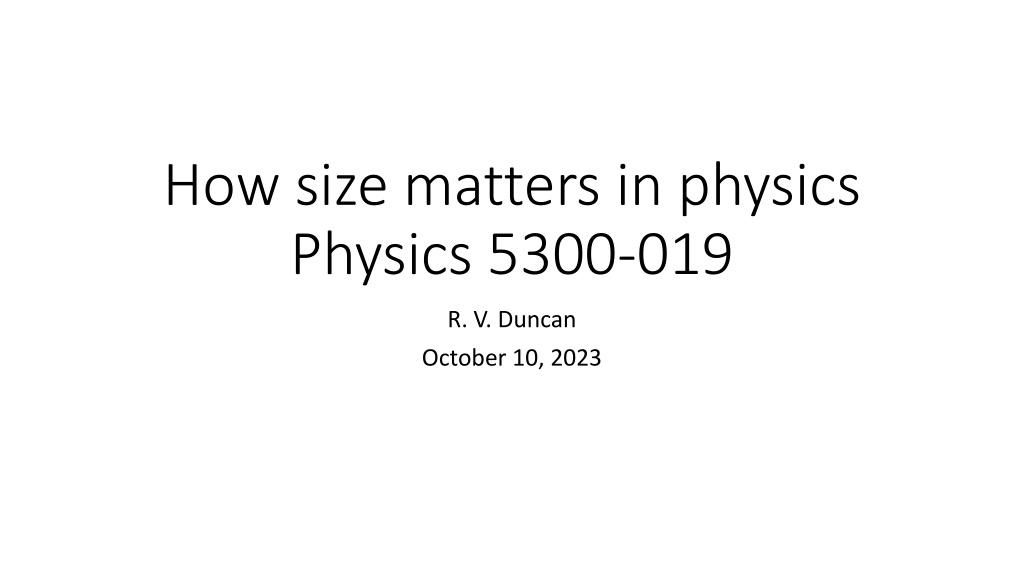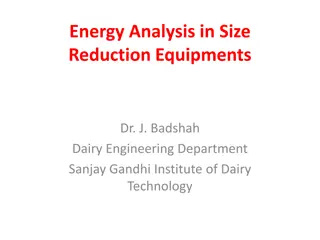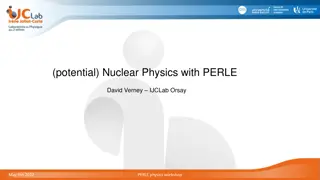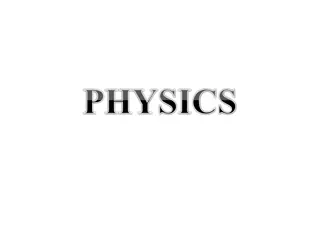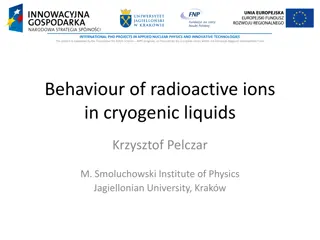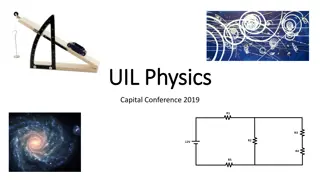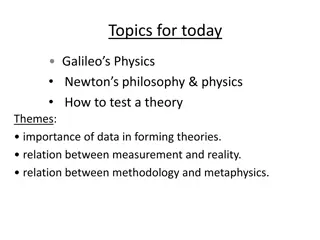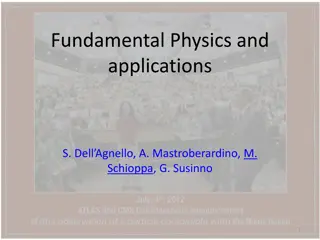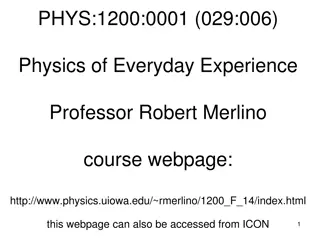Impact of Size in Physics
Delve into the intricate world of physics and discover how size plays a crucial role in various phenomena. From understanding the shift from bulk to surface effects to the implications of small terminal velocities, this exploration covers a range of topics including heat and fluid transport effects, Brownian motion, and the transition into quantum mechanics. Unravel the significance of size across different scales in the realm of physics.
Download Presentation

Please find below an Image/Link to download the presentation.
The content on the website is provided AS IS for your information and personal use only. It may not be sold, licensed, or shared on other websites without obtaining consent from the author.If you encounter any issues during the download, it is possible that the publisher has removed the file from their server.
You are allowed to download the files provided on this website for personal or commercial use, subject to the condition that they are used lawfully. All files are the property of their respective owners.
The content on the website is provided AS IS for your information and personal use only. It may not be sold, licensed, or shared on other websites without obtaining consent from the author.
E N D
Presentation Transcript
How size matters in physics Physics 5300-019 R. V. Duncan October 10, 2023
Review of size effects discussed so far Review Feynman s amazing paper Compare bulk effects (i.e. gravity and momentum) to surface effects (i.e. pressure and viscosity / drag) and consider how life changes as you go small Why small things have low terminal velocities Why small things swim through viscid fluids with no momentum built up Electrical charging and the transition to single electron devices Echarge= e2/(2C), so for one e-, C ~ 3 aF results in Echarge= kTroom~ 26 meV But that is not enough: E << E, so R (to ground) >> e2/h ~ 25.8 k
Size effects in heat and fluid transport Thermal conduction time: ~ d2/DT where DT= / ( CP) Heat conduction Q = A T/d where: d T Remember Feynman s analysis, and our discussions of when conduction cooling is sufficient and convection cooling is unnecessary and not possible. Convective heat transfer: Rayleigh number Ra= g Td3/ is the ratio of convection heat transfer to conducted heat after convection starts For convection to start, Ra> Ra,crit~ 1708 https://www.pfeiffer-vacuum.com/en/know-how/introduction-to- vacuum-technology/fundamentals/types-of-flow/ Laminar becomes turbulent flow when the Reynold s number ~ 2400
Other fluid effects Brownian motion: https://en.wikipedia.org/wiki/Brownian_motion For particles with d < 10 m, random air collisions can transport the particles Always handle dry nanoparticles under a watch hood! Surface tension creates huge local forces on a small scale Young-Laplace: P = 2 /d, water= 0.0728 N/m So, a 1 nm diameter bubble has an internal pressure ~ 700 atm See, for example: https://pubs.acs.org/doi/10.1021/ja065242z
When does quantum become important? Distinct features of quantum mechanics: Wave / particle duality, p = (h/i) Identical quantum particles are physically indistinguishable in an ensemble Wave function symmetry corresponds to fundamental classes of quantum particles Quantum eigenstate is projected from a quantum state by a measurement deBroglie wavelength sets the scale: dB= h / p Remember superfluid helium: dB~ spacing at p = (3mkT)1/2, T = 2.2 K Matter wave coherence exists for bosons when dB~ boson spacing More generally for particles in a degenerate state Superconductivity, 2D electron gasses and the quantum Hall effect, etc. Always compare dBto some other characteristic length in the system
Next few classes On 10/12, we will cover tritium (3H) measurements, and measurements of very low energy beta particles, to complete our nuclear measurements section of this course. Meet in ESB 153. On 10/17 and 10/19, we will cover the Quantum Design PPMS system, phase-lock amplification, and the quantum Hall effect. Prof. Y.S. Eo will guest-lecture. Meet in Science Room 118. On 10/24 and 10/26, we will meet on-line again to discuss an exciting new sub-discipline called quantum nucleonics , and nanoscale opportunities in nuclear physics and engineering. On 10/31 to the end of this term we will explore quantum sensing
